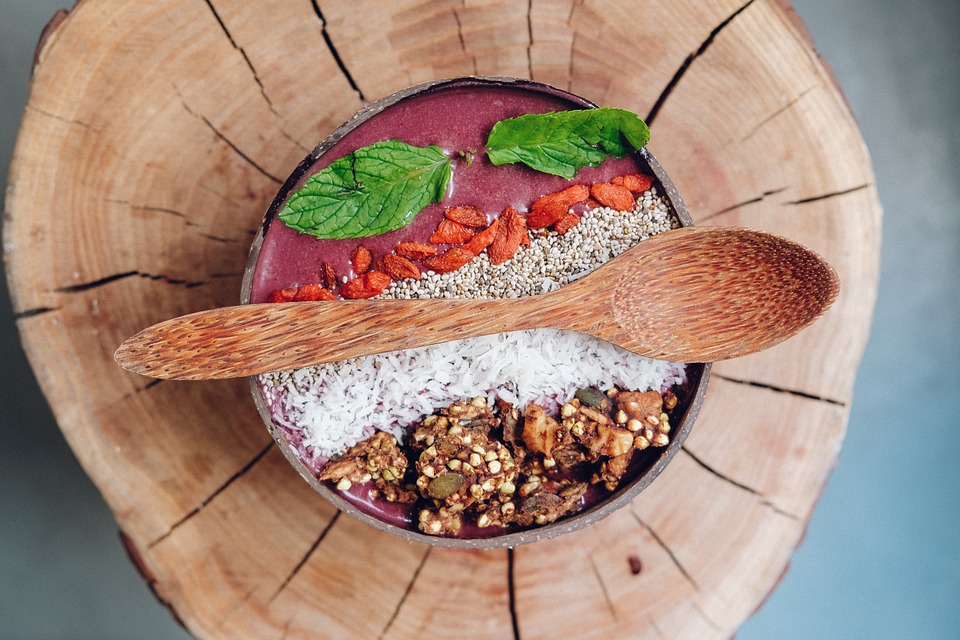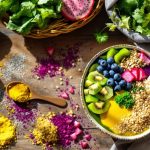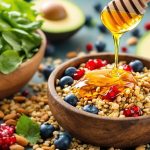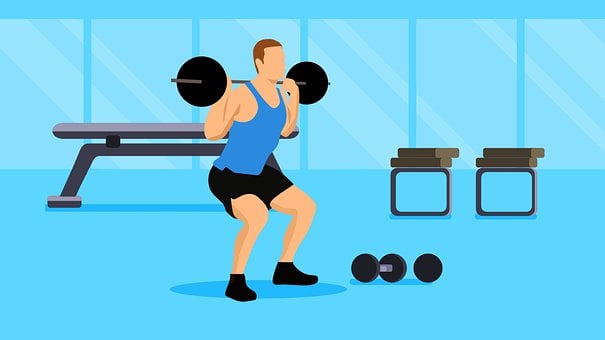
WHAT ARE SUPERFOODS?
The term “superfood” first appeared in a Canadian newspaper in the year 1949. Given the way the word is used today, you might assume that it was used to describe a vegetable or some new brand of health drink, but in reality, it was actually used to reference the nutritional properties of a muffin! From the late 20th century onwards, the term “superfood” became a common marketing tool in the food and drink industry and was used to sell everything from baked goods to fad diets. Today, there is still no set definition for the word, but rather than promoting muffins and fad diets, it is now almost exclusively used to describe foods with extraordinary nutritional value.
SO ARE SUPERFOODS A HOAX?
Learning that the word superfood is little more than a marketing term can be disappointing, but the word’s origin and historical misuse shouldn’t be used to dampen the fact that many numbers of real superfoods do exist. Rather than disregarding superfoods altogether, we need to be smarter when faced with superfood marketing and wiser with our own food choices.
The truth is, the word superfood is an instant opportunity to add value to a product. By calling a product or food a ‘superfood,’ brands can charge more for them. For this reason, it is essential to look beneath food and drink marketing statements to assess how super the superfoods we eat really are. To make matters worse, influencers and social media platforms can drastically affect certain foods’ popularity, elevating them to a superfood status simply because they are photogenic. We’ve seen this firsthand with foods like avocado, which once were seen as high-fat and unhealthy and now are sold on toast for premium prices in health-food cafes across the world.
HOW TO BE SUPERFOOD SMART
To avoid being sucked into the false superfood hype, it is critical to separate what we know for a fact from what we are told in superfood marketing. At the end of the day, a food’s nutritional makeup is what matters most when determining if it deserves to be labeled as a superfood, not how photogenic it is or whether it is perceived as exotic. When choosing which superfoods to buy, do your research first and don’t take the marketing, you see at face value.
WHAT ARE THE HEALTH BENEFITS OF EATING SUPERFOODS?
Whether you see the word ‘superfood’ to mean healthy or a hoax, it is impossible to deny that some foods can provide more health benefits than others. Dozens of the world’s most nutritious foods are labeled as superfoods – mostly fruits and vegetables, nuts, seeds, and legumes with the occasional animal product like salmon and greek yogurt. There are no set nutritional entry criteria for food to enter the superfood world. Therefore, the health benefit you can expect to see can vary depending on which kinds of superfoods you eat. Here’s an example of some of the health benefits you could experience if you were to eat a wide variety of superfoods on a regular basis.
IMPROVED DIGESTION
Superfoods like leafy greens, nuts, seeds, and legumes all contain a healthy dietary fiber dose, which helps keep your digestive system moving. Without sufficient fiber in your diet, you risk starving your good gut bacteria and depleting your gut microbiome, which can cause digestive issues, constipation, bloating, and even certain types of cancer.
BETTER HEART HEALTH
Ischemic Heart Disease (IHD), also known as Coronary heart disease, remains the leading cause of death worldwide, killing almost nine million people each year. IHD is caused by a buildup of fat and cholesterol in the coronary arteries, ultimately leading to a heart attack. The good news is, eating more superfoods like nuts and seeds can help reduce your risk of IHD by lowering harmful LDL cholesterol levels in the blood and clearing fatty deposits in the arteries. All in all, this makes it easier for the heart to pump blood around the body and reduces a person’s risk of a heart attack.
A MORE EFFICIENT IMMUNE SYSTEM
Another fantastic health benefit of eating superfoods is a more efficient immune system. Superfoods, in general, all contain an abundance of vitamins and minerals such as vitamin C, vitamin D, vitamin E, and vitamin B6, which all improve immune function.
A HAPPIER MOOD
The food we eat affects not only our bodies but also our mind. Healthy superfoods like fruits, vegetables, nuts, seeds, and legumes can all help balance pesky hormones and can even help the brain to recover from injury. There’s also increasing evidence that eating a balanced diet filled with whole foods can help to reduce symptoms of depression, anxiety, and other mental health disorders.
IMPROVED ENERGY
Finally, alongside all of the other health benefits listed above, eating an abundance of superfoods is also linked to greater energy levels. This is because superfoods are often helpful in maintaining steady blood sugar levels, preventing the dreaded post-lunch slump.
COMMON SUPERFOODS YOU CAN TRY FIRST
Some superfoods come in their straight-from-nature form, while others are available in a more convenient capacity, like a powder or liquid form. Here are some of the more recent superfoods that have been rising in popularity, plus what they do and how to use them.
Keep in mind, just as other supplements aren’t regulated by the FDA, neither are these powders. That means that manufacturers can make claims on their labels and bottles that the government doesn’t double-check and the amount of each ingredient can vary from bottle to bottle. Make sure you check the source of where your powder and do some research on the brand. Looking for third-party labels like Good Manufacturing Practices (GMP) is also a good idea.
1. MCT Oil/Powder
MCT stands for medium-chain triglycerides, which is a type of fat. You’ll find MCTs in coconuts and coconut oil, and while you can buy it in oil form, you’ll also find them as a powder. Your body can more easily digest MCTs thanks to its shorter chemical chain.
One of the biggest benefits of MCT is that it can help increase satiety and decrease food intake, which may lead to weight loss, according to research. They’ve also been shown to help improve gut microbiota, leading to promising results for energy burn and metabolic health (this is especially beneficial for obese individuals).
Of course, MCT won’t be your magic weight-loss trick. It’s a good complement to a healthy, plant-based diet, but not a cure-all for shedding pounds or solving all health problems.
How to use MCT Powder:
You can get too much MCT in your diet—it is fat, so don’t go overboard with consumption. Try to stick to about one to two tablespoons max per day. Easily throw it in a smoothie or a cup of coffee in the morning, to give your drink a dose of healthy fats to keep you full.
MCT powder or oil is a great superfood to try if you enjoy tea or coffee lattes because it can be added right into them.
2. Nutritional Yeast
Nutritional yeast has a strong flavor and the taste is similar to rich, sharp cheddar cheese, so it’s the perfect flavor factor in so many recipes to get that cheesy taste even if you don’t eat dairy. This is what makes it so popular in vegetarian and vegan lifestyles!
Nutritional yeast is commonly referred to as a “superfood” because it contains heaps of B vitamins, protein, and fiber in a very small volume.
This is a great superfood to try and start with because it goes into so many plant-based recipes and can be topped onto dishes really easily without much effort.
How To Use Nutritional Yeast:
Use nutritional yeast sprinkled on anything and everything! It’s great on Foundational Five to nourish bowls, rice, potatoes, popcorn, and roasted veggies. You can also mix it into sauces and dressings for a boost of nutrition too!
3. Cacao Nibs
Cacao nibs are small, crushed cocoa beans packed with an abundance of nutritional benefits.
In contrast to the majority of chocolate products out there, cacao nibs are naturally very low in sugar. Just as our other superfoods, cacao nibs are naturally packed with antioxidants that help fight off free radicals that would otherwise cause damage to our bodies. They also have a surprising amount of fiber and fats which make them a great meal component to increase satiety.
Additionally, cocoa flavonoids have been shown to decrease inflammation.
How To Use Cacao Nibs:
Cacao nibs can be eaten as-is or ground into a thick paste to be used in chocolates. You can add cacao nibs to smoothies and desserts for a boost of rich, slightly bitter chocolate flavor and crunch. You can also use cacao nibs in truffles, muffins, cakes, and bread!
4. Goji Berries
Goji berries have earned the title of a superfood because of their great nutrient density and antioxidant content.
If you’ve never had a goji berry before, they taste like a raisin and cranberry has been mixed together!
Goji berries are packed with fiber to help keep you full and sustain energy all day long. They’re also praised as a potent source of antioxidants – zeaxanthin, for example, is responsible for the goji berry’s bright red, orange color. Their antioxidants help protect the body from free radicals that we may be exposed to. The consumption of goji berries has also been associated with increased testosterone, energy, stamina, and quality of sleep.
How To Use Goji Berries:
Use as you would any dried fruit! Enjoy them in oatmeal, porridge, salads, or smoothies. They’re also great to add a bit of a sweet taste to trail mixes or desserts!
5. Spirulina
Spirulina is a blue-green microalgae grown and harvested from very alkaline water sources.
Spirulina provides an array of health benefits. It has anti-inflammatory properties from antioxidants, it can boost immune function, protect the liver, reduce allergic reactions, improve muscle endurance, improve oxidative stress, reduce oral cancer, and may also help fight infections and antibiotic-related illnesses. It does it all!
Spirulina is also packed (almost 80% protein by dry weight) of protein, which is essential for rebuilding muscle tissue after workouts, maintaining lean body mass (especially if you’re on a weight/fat loss plan), and essential for a host of other metabolic processes in the bod
How To Use Spirulina:
Spirulina can be added to smoothies, desserts, fresh juices, or water for a boost of nutrition. It also adds a beautiful aqua-blue color to the recipe when used!
6. Pumpkin Seeds
There are so many super-seeds out there, but one of the cheapest and most easily accessible varieties is pumpkin seeds. Pumpkin seeds are like little nutrient bombs; each is packed with vitamins and minerals as well as healthy fat and tons of dietary fiber. If you’re eating a pumpkin or squash, then scoop out the seeds and roast them yourself, or alternatively, buy the seeds ready-roasted.
THE LOW-DOWN ON SUPERFOOD POWDERS AND SUPPLEMENTS
Increasingly, more and more superfoods are being turned into powders and supplement tablets. Although we have nothing against the sale of superfood powders and supplements, we do think it’s important to be aware of their pros and cons.
THE PROS OF SUPERFOOD POWDERS
Superfood powders and supplement tablets have three main selling points – they’re convenient, don’t go off, and you don’t need to taste them.
CONVENIENCE
We live in a world where convenience is very important and time is valuable. For people who don’t have the time to chop and wash kale, grate ginger or crush garlic, consuming these superfoods in powder or tablet form is much easier.
SHELF LIFE
One big complaint with fresh fruit and vegetables is that they tend to go off very quickly. Unless you’re shopping frequently and eating whole fresh foods every day, this means you could end up with a lot of food waste. Superfood powders and supplements don’t have the same kind of shelf life and can last out of the refrigerator for weeks or even months.
PALATABLE
Let’s face it, not everyone likes the taste of kale or broccoli, and so the idea of being able to consume their nutrients in powder or pill form is very appealing. Green powders can be blended into chocolate-flavored smoothies, and tablets can be swallowed with no taste at all, making them an easy way for fussier eaters to consume superfood nutrients.
THE CONS OF SUPERFOOD POWDERS
Although superfood powders and supplements can definitely benefit some people, they’re not always better than merely consuming whole foods. First and foremost, superfood powder products are often expensive, not to mention their nutritional content can be altered through processing, and making them too easy to eat can lead to an overconsumption of specific vitamins.
COST
By taking whole foods like kale and turning them into a powder, brands can stick a costly superfood label on their product. This superfood tax, coupled with the cost of production, often makes products like powders and supplements very expensive for what they are.
THEY MAY NOT BE AS NUTRITIOUS
Another important thing to understand is that drying out and powdering a whole food can change its nutritional composition. Depending on the way that certain powders have been produced, they could be less nutritious than they claim to be, and it’s also much easier to missell a powder than to sell a fake bunch of kale.
IT’S EASY TO OVERDOSE ON CERTAIN VITAMINS
Finally, adding a scoop of green powder here and another one there may seem harmless, but if you add too much of any superfood into your diet, then you risk over-consuming certain nutrients. To avoid overdosing on vitamin powders, always stick to the recommended serving size.














